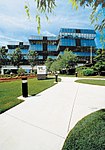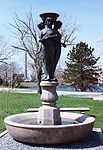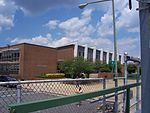Washington Cancer Institute
The Washington Cancer Institute (WCI) is Washington, D.C.'s largest cancer care provider, treating more cancer patients than any other program in the nation's capital. The Washington Cancer Institute opened on May 9, 1992. Under the leadership of Dr. Sandra Swain, the Cancer Institute diagnosed more than 2,305 new cases during fiscal year 2007. There were more than 79,720 outpatient visits and more than 2,334 inpatient admissions during that period. WCI provides comprehensive, interdisciplinary care including surgical, radiation and medical oncology services as well as counseling for patients and families, cancer education, community outreach program and clinical research trials. The Center for Breast Health saw 15,242 patients during fiscal year 2007. WCI is affiliated with the Washington Hospital Center.
Excerpt from the Wikipedia article Washington Cancer Institute (License: CC BY-SA 3.0, Authors).Washington Cancer Institute
Irving Street Northwest, Washington
Geographical coordinates (GPS) Address Phone number Website Nearby Places Show on map
Geographical coordinates (GPS)
| Latitude | Longitude |
|---|---|
| N 38.929444444444 ° | E -77.014722222222 ° |
Address
Washington Hospital Center
Irving Street Northwest 110
20010 Washington
District of Columbia, United States
Open on Google Maps









